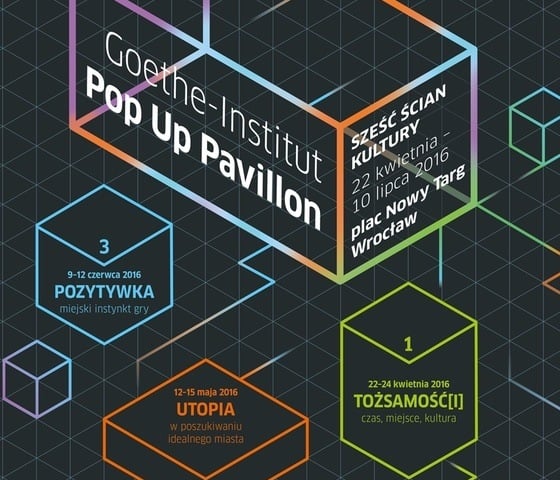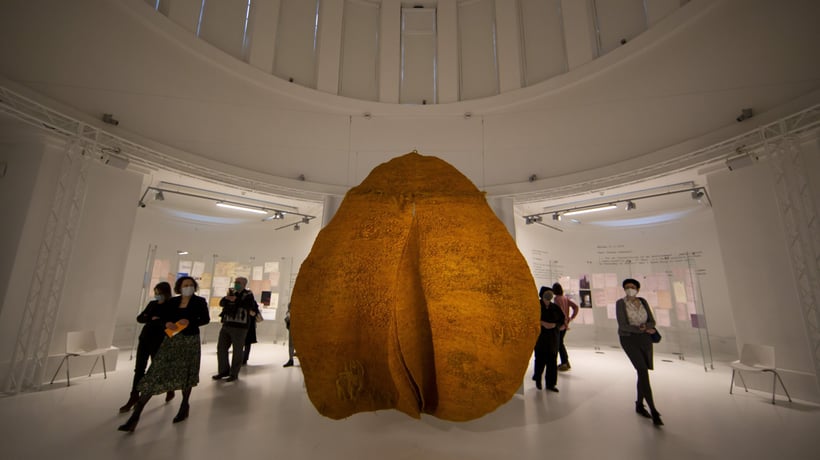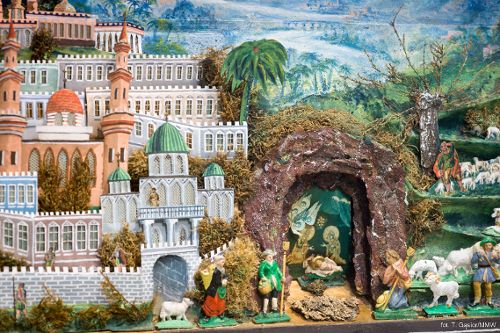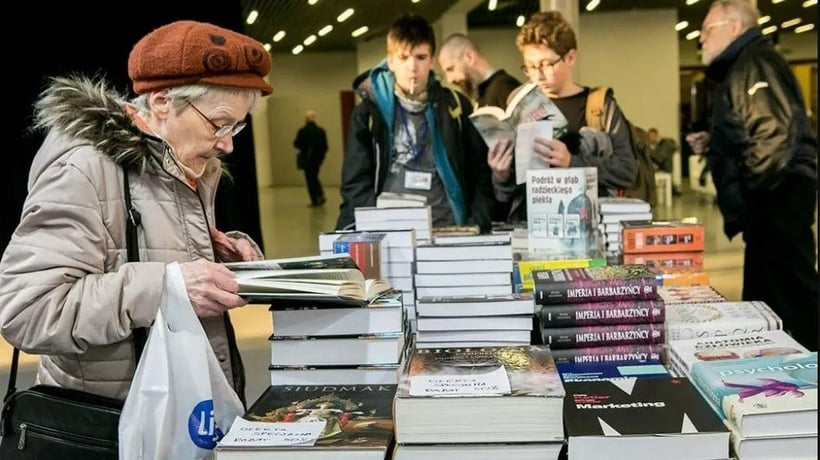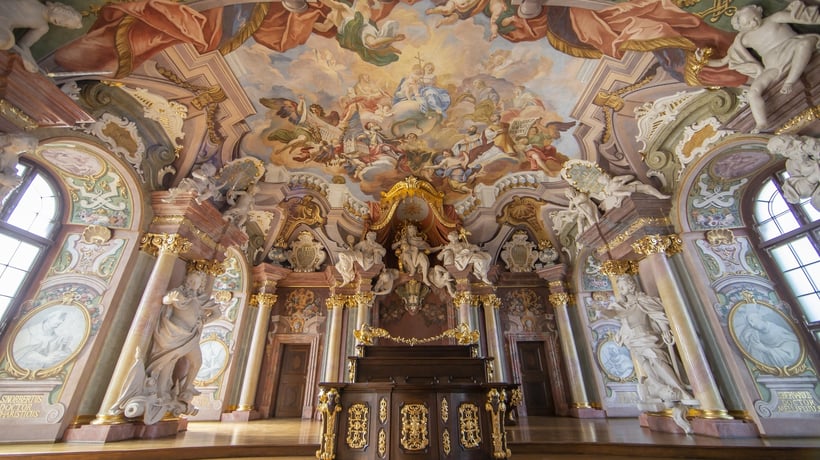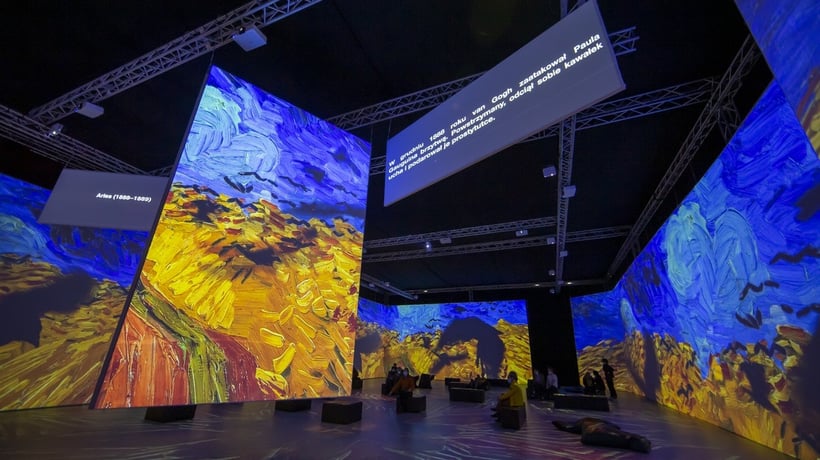The pavilion is a specially designed, glazed container that is 7x3x3m in size. The project is organised as part of the ECC Wroclaw 2016 celebrations and the 25th anniversary of signing the Polish–German Treaty of Good Neighbourship and Friendly Cooperation. The pavilion is expected to remain in Plac Nowy Targ until July. The facility is going to give a new lease of life to culture in the area. Key events in the programme are scheduled for three weekends, in April, May and June each.
Three weekends with culture
The pavilion is expected to open on 22–24 April, when Wroclaw takes over as UNESCO Book Capital. Each weekend will explore a specially designed theme. The first in the series will be devoted to identity. The discussion is going feature: Filip Springer, Olga Gryasnova, a German writer born in Baku, Azerbaijan; Steffen Möller and Christian "Flake" Lorenz, a keyboard player in Rammstein. The programme also provides for a performance featuring 5-metre tall puppets and Silent Disco by Polish and German DJs..
The subsequent weekend (12–15 May) will explore the theme of "Utopia: In Search of an Ideal City". Utopia will be discussed by Markus Stromiedl, the author of science fiction thrillers; and poet Silke Scheuermann, while a German-Finnish group called YKON is expected to deliver a culinary-cartographic performance.
The final weekend in the programme comes in June (9–12 June) to elaborate on the theme of "Music Box". It brings a variety of location-based games for the participants to better explore the city. The programme provides for creating an urban playground as well as discussions on democracy and community.
Appetite for the city
Each weekend at the Goethe-Institut Pop Up Pavillon will be accompanied by an installation that elaborates on the theme in hand. Interactive and engaging, the artworks will explore the themes of identity, contemporary utopia and game.
The first in the series is Digesting History, which combines a passion for confectionery with a love of history and architecture (closing day on 17 April, from 11 am until the last piece / exhibition from 14–17 April). Chocolate, almond paste and sugar will be used to recreate Wroclaw's landmarks designed by Hans Poelzing. Some of them still exist, while some of them have never been executed. The project involves confectioners from the collective Food Think Tank and the Bakers' and Confectioners' Guild of Lower Silesia. The miniatures will be ranging from 5 to 80 cm in height. Curator Susanne Prinz and Olga Lewicka, a graduate from the Wroclaw Academy of Fine Arts, elaborate on the phrase "to have an appetite for the city".
Memory Waves are in turn going to take you on an acoustic journey to explore Wroclaw's past (preview 26 April, 6 pm / exhibition from 26 April–9 May). A specially designed radio receiver will be playing excerpts from archive broadcasts by the Polish Radio, Reichessender Breslau and Radio Solidarność The history of Wroclaw will be retold through sounds, from the collapse of the German Empire and the times of the Weimer Republic, through the dark years of Nazi Germany, to nondescript Communist Poland and more contemporary times. The audience can decide on their own which broadcast to choose by adjusting the waves in the radio. Each channel is devoted to a different sphere: art and culture, history or Wroclaw's personalities. Created by Dorota Błaszczak, Wojciech Barcikowski and Zbigniew Pietrzak, the project is being carried out under the auspices of the Polish Radio.
The installation "A sense of place" will take us back to the winter of 1944 and 1945, when Wroclaw was literally flooded by feathers and down from tattered quilts and pillows. All you need to feel it is your tablet or smartphone. The application by Monika Rut and Arthur Clay will let you immerse in the feathers gently dropping from the sky. You can touch each of the feathers on your screen, so that it does not fall to the ground, and see what's hidden underneath: a photograph, a document, notes or a poem. The application also features the landscape of war-torn Breslau.
Feathers and music box
The installation Big Printer deals with personal data protection (preview on 19 May, 6 pm / exhibition from 19 May to 7 June). The installation was created by a group of Berlin-based artists called schnellebuntebilder. The installation makes a response to passers-by as they move. It automatically captures their faces in photographs that are later shredded into tiny little pieces.
The project comes to a close with Music Construction Machine, a musical construction for each and every viewer to play on (preview on 17 June, 6 pm / exhibition from 17 June–10 July). The construction was designed by Niklas Roy, who is widely known as the "inventor of useless objects". His massive music box works like a production line (17 June–10 July). A set composed of an electric guitar, keyboard and drums will be inserted inside the pavilion. Each instrument is propelled by a mechanism that has a unique transmission ratio and is attached to a conveyor belt. Only a crank will protrude on the outside Each viewer will be offered a chance to set the orchestra in motion and produce their own piece of music.
Goethe-Institut Pop Up Pavillon will remain on display in Plac Nowy Targ until 10 July.


